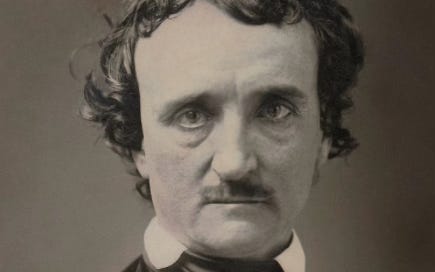In Part I, we learned about Mary Rogers, the “Beautiful Cigar Girl” of 1841 New York, found dead in the Hudson River under mysterious circumstances that remain unsolved to this day. Her case sparked the police, the press, and the public into a frenzy of details that would set alight any modern true crime podcast or Netflix documentary. The fascination with the revulsion and puzzle surrounding Mary’s murder was also kindling for a writer who we now view as the father of modern tales of terror and mystery, Edgar Allan Poe.
From 1837 to 1838, Poe occupied a cheap apartment on Sixth Avenue in Manhattan and was said to have paid frequent visits to Anderson’s cigar emporium at 319 Broadway. Here, he often laid eyes on Mary Rogers. Many other notable writers of the period, such as James Fenimore Cooper and Washington Irving, were also regulars of the shop, and were said to have all fallen under Mary’s spell, so it’s safe to assume she likely left a lasting impression on Poe who was far from immune to the allure of the opposite sex. He left New York for Philadelphia after just 18 months but was shocked to learn of Mary’s murder a few years later and read every account of the crime that he could find to gain better insight. Already a prolific if not successful writer by this time, Poe had, in April of 1841, published what is now regarded as the first detective story, though the word “detective” did not yet exist. The Murders in the Rue Morgue introduced readers to the Parisian amateur investigator C. Auguste Dupin and his unnamed narrator sidekick, both of whom gave direct influence 45 years later to Conan Doyle when he created Holmes and Watson. The story had been very popular, and Poe brought the characters back the next year. Inspired by the murder of
Keep reading with a 7-day free trial
Subscribe to The Case-Book of Adam Cole to keep reading this post and get 7 days of free access to the full post archives.



